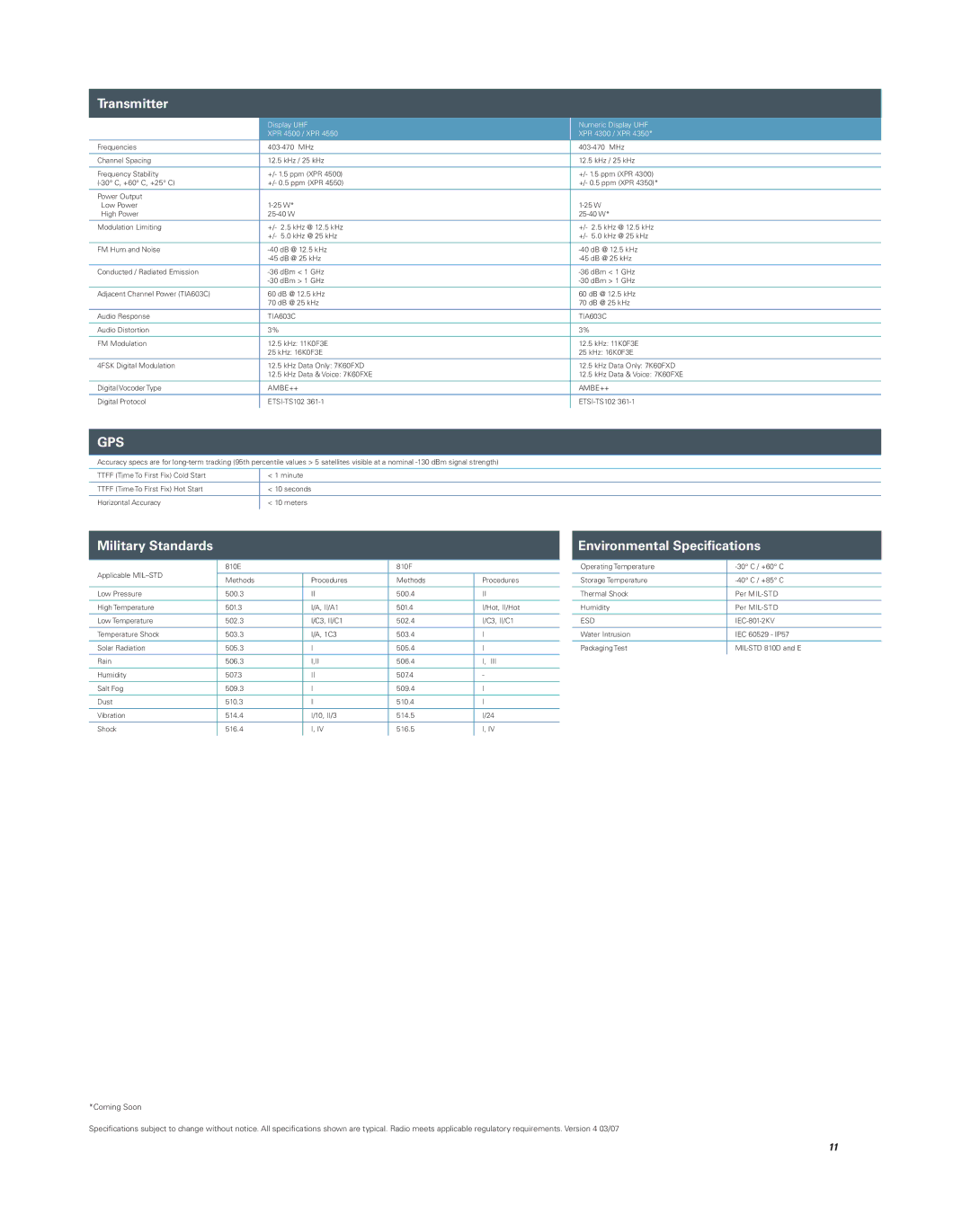XPR 4350, XPR 4500, XPR T4300, XPR 4550 specifications
Motorola's XPR series radios, including the XPR 4550, XPR T4300, XPR 4500, and XPR 4350, stand out in the realm of professional communication devices. Each model is designed to meet the diverse communication needs of industries such as public safety, construction, and event management.The XPR 4550 exemplifies the pinnacle of digital radio technology, featuring a robust design that ensures reliability in challenging environments. This model supports both analog and digital modes, allowing for seamless communication across different systems. It includes a large color display, which enhances readability and provides easy access to a range of features. The XPR 4550 is equipped with Bluetooth capabilities, enabling hands-free operation, while its GPS functionality allows for real-time location tracking.
Next in line is the XPR T4300, primarily aimed at users seeking an affordable yet effective communications solution. This model also supports both analog and digital signals, making it versatile for various applications. The XPR T4300 is known for its compact design, which makes it simple to carry and operate, even during extended use. Its intuitive interface allows for easy navigation through features and functions, making it a suitable option for users new to two-way radios.
The XPR 4500 is another flagship model that brings together advanced features and user-friendly functionality. It offers a wide range of channels, ensuring multiple conversations can occur without interference. Its rugged construction is ideal for harsh working conditions, providing reliable performance in both indoor and outdoor settings. The XPR 4500 also comes with enhanced audio quality, ensuring clear communication, even in noisy environments.
Finally, the XPR 4350 builds on the XPR 4500's foundation, offering similar features but with a slightly more compact form factor. It is designed for users who require portability without sacrificing performance. The XPR 4350 includes advanced noise cancellation technology, significantly improving audio clarity during conversations. Like the other models, it supports a wide range of digital and analog communications, ensuring connectivity in various scenarios.
In summary, the Motorola XPR series radios—XPR 4550, XPR T4300, XPR 4500, and XPR 4350—successfully blend advanced technology, durability, and ease of use. These devices are ideal for professionals who rely on efficient communication to enhance safety and productivity in their day-to-day operations. Whether for large-scale events or routine operation in challenging environments, the XPR series provides a reliable solution to keep teams connected.

